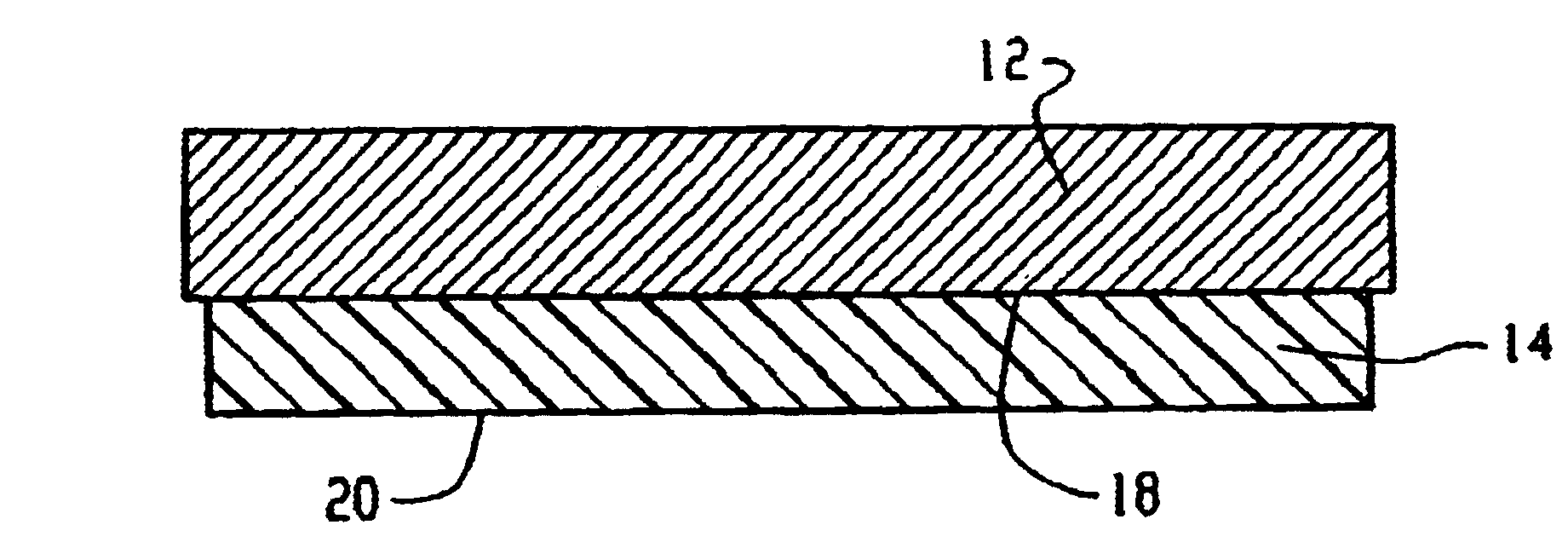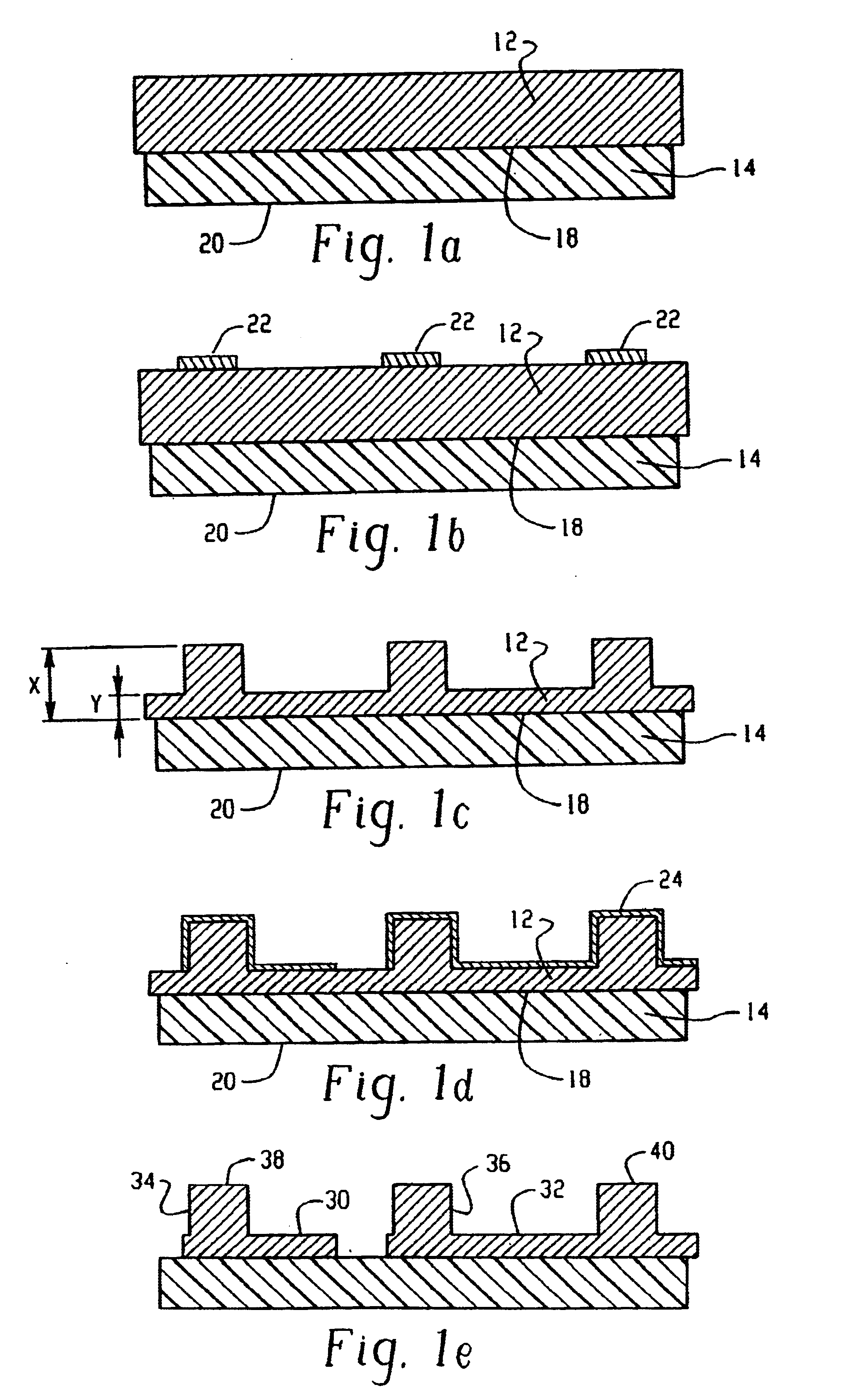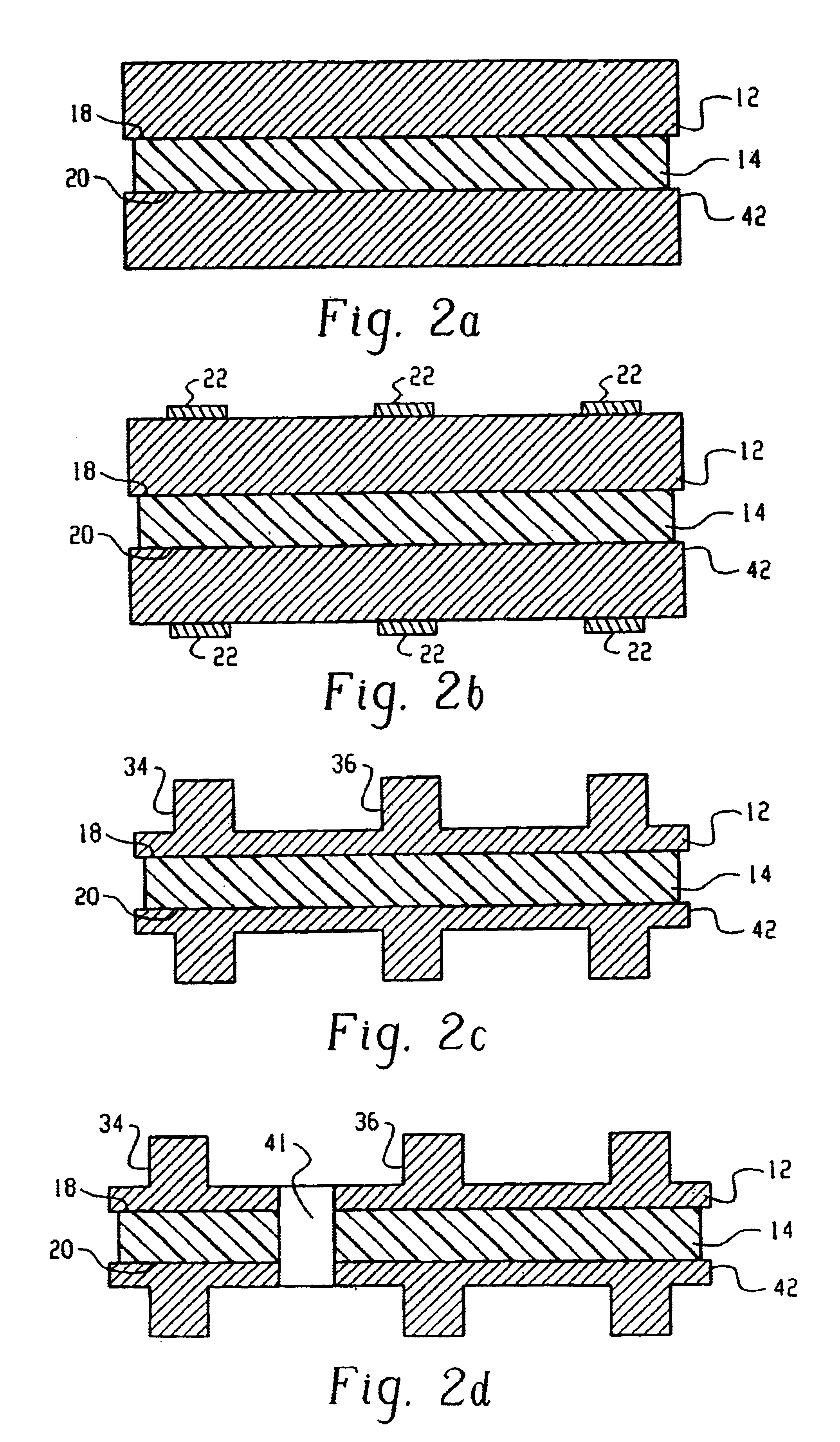Manufacturing methods for printed circuit boards
a manufacturing method and printed circuit board technology, applied in the field of printed circuit board manufacturing methods, can solve the problems of poor electrical characteristics of polyimides, standard methods used to form bumps on printed circuit boards that cannot meet these requirements, and roll processing is not suitable for teflon-based materials, etc., to achieve the effect of increasing the rigidity of a multi-layer structure and being easy to handl
- Summary
- Abstract
- Description
- Claims
- Application Information
AI Technical Summary
Benefits of technology
Problems solved by technology
Method used
Image
Examples
Embodiment Construction
[0020]In accordance with the present invention, a conductive layer comprising a plurality of conductive bumps, a plurality of electrically conductive circuit lines, and a plurality of contact pads is subtractively formed from a single substantially planar layer of metal that has been disposed on a surface of a dielectric layer. Because the lines, pads and bumps are all formed from a single metallic layer, the bumps, pads, and lines are electrically connected and continuous. As used herein the term “continuous” means that there are no interfaces between the conductive bumps, the contact pads, and the circuit lines. In one embodiment, a first metal layer, preferably a substantially planar metal layer, having a first height (x) is disposed on at least one surface of the dielectric substrate through plating or, preferably, through lamination of a metal foil to the substrate. A first photoresist is then applied to the exposed surface of the first metal layer. The first photoresist is ima...
PUM
| Property | Measurement | Unit |
|---|---|---|
| size | aaaaa | aaaaa |
| diameter | aaaaa | aaaaa |
| diameter | aaaaa | aaaaa |
Abstract
Description
Claims
Application Information
 Login to View More
Login to View More - R&D
- Intellectual Property
- Life Sciences
- Materials
- Tech Scout
- Unparalleled Data Quality
- Higher Quality Content
- 60% Fewer Hallucinations
Browse by: Latest US Patents, China's latest patents, Technical Efficacy Thesaurus, Application Domain, Technology Topic, Popular Technical Reports.
© 2025 PatSnap. All rights reserved.Legal|Privacy policy|Modern Slavery Act Transparency Statement|Sitemap|About US| Contact US: help@patsnap.com



